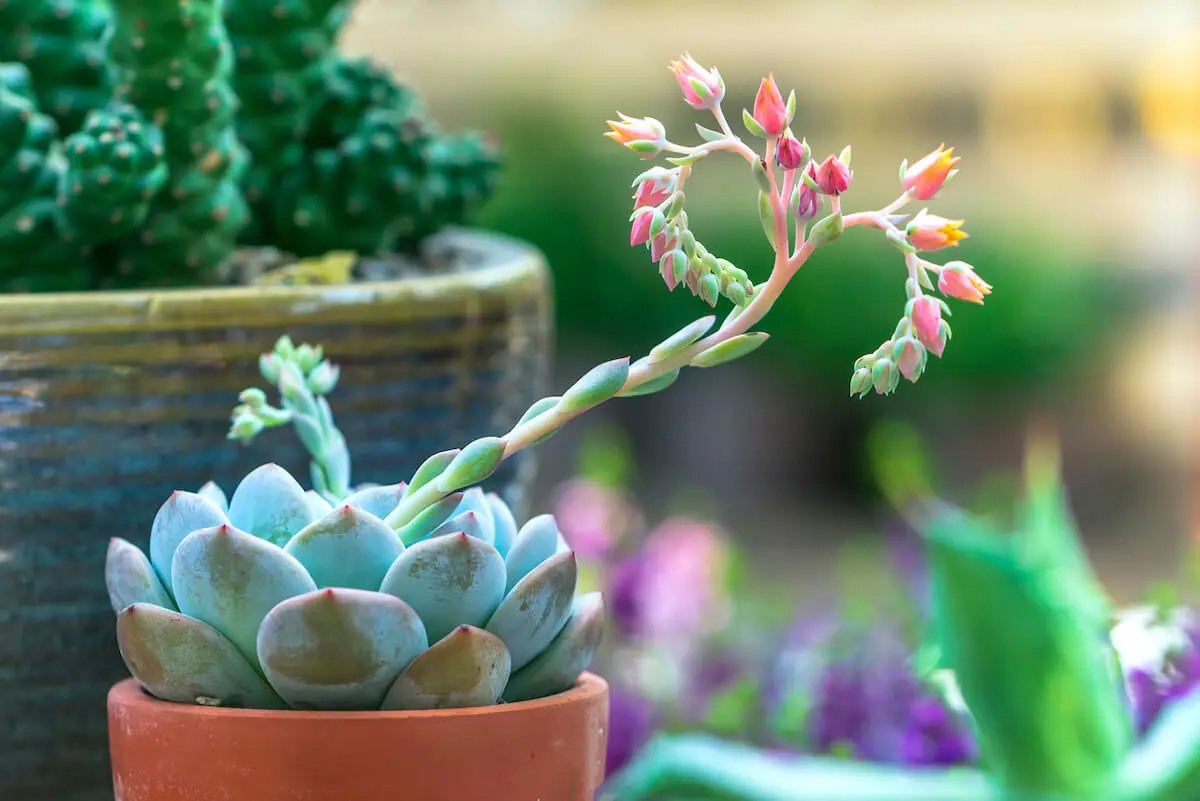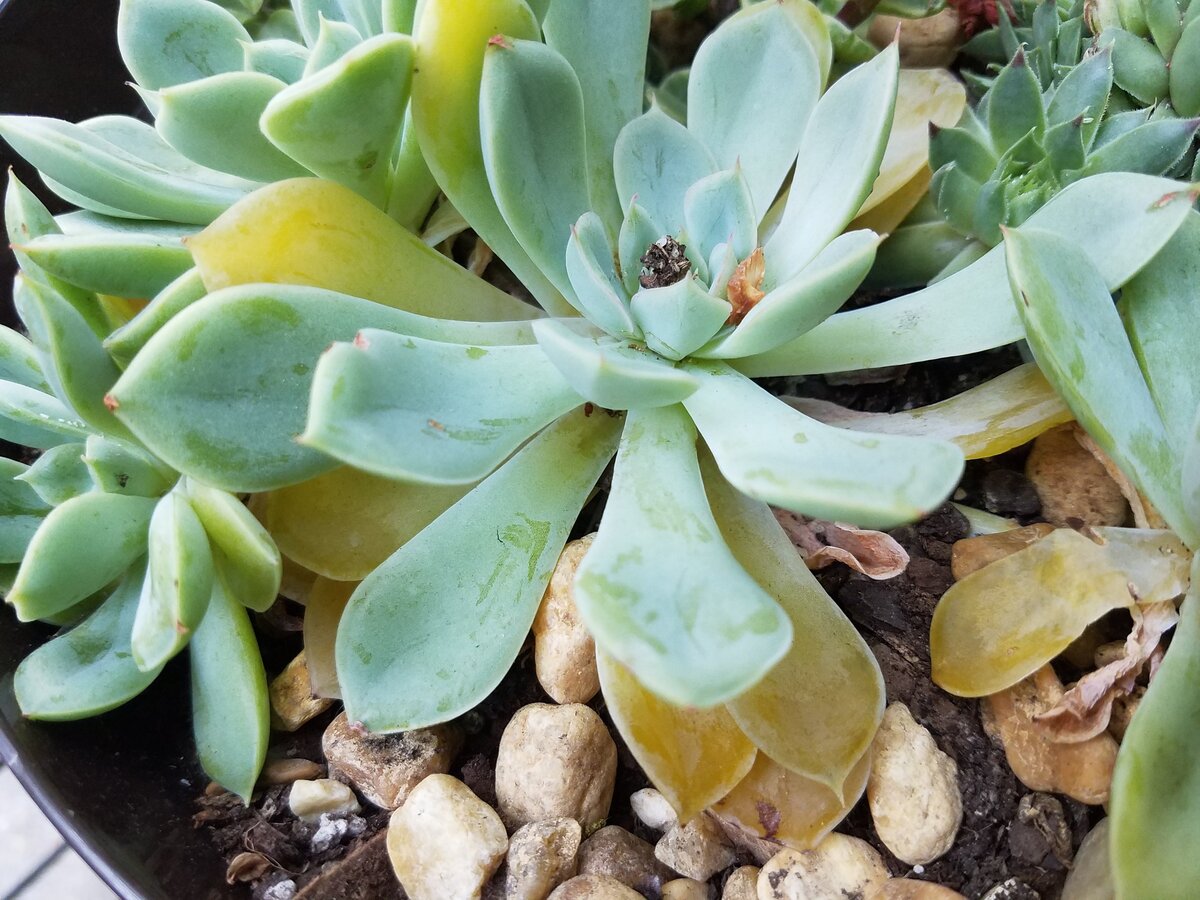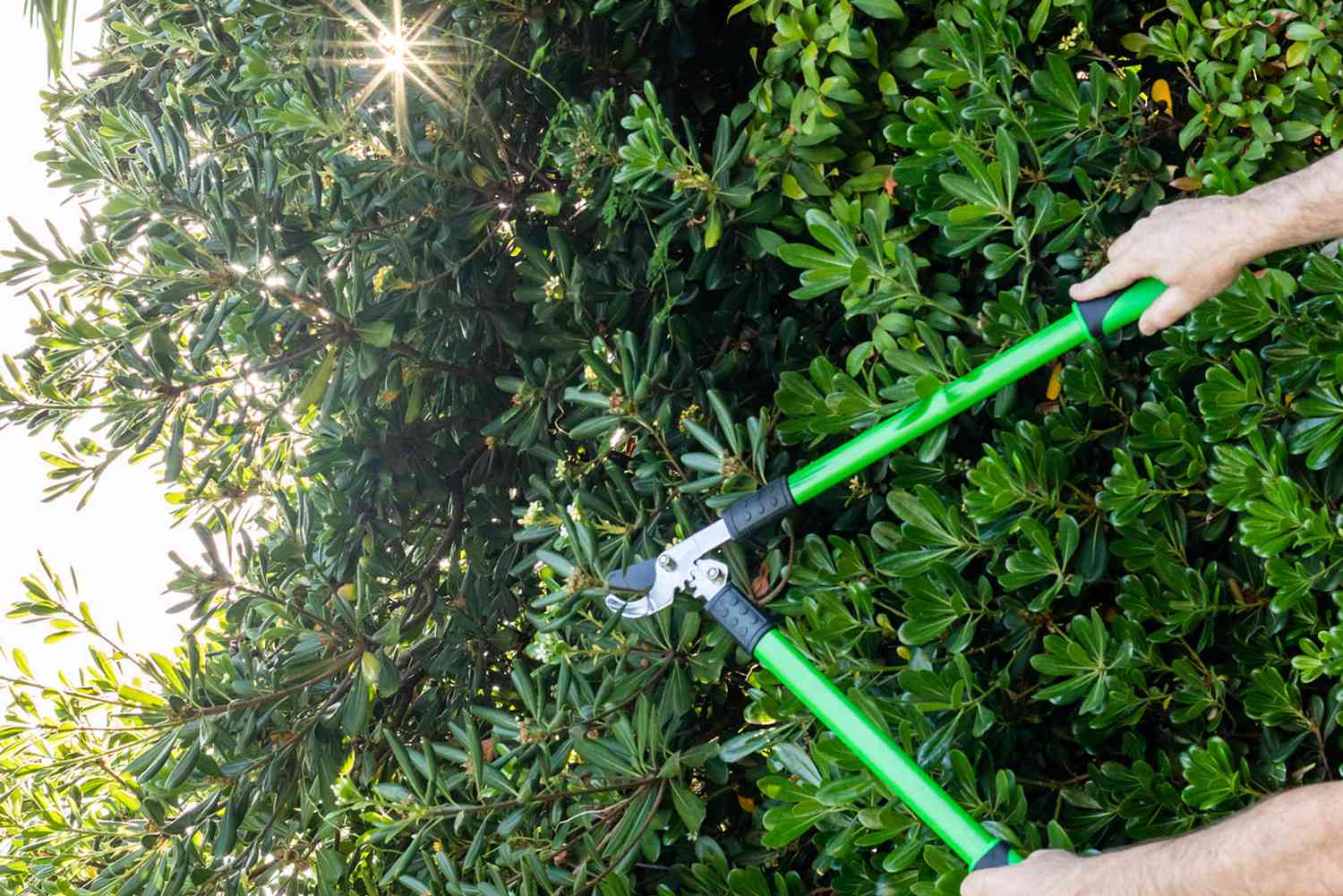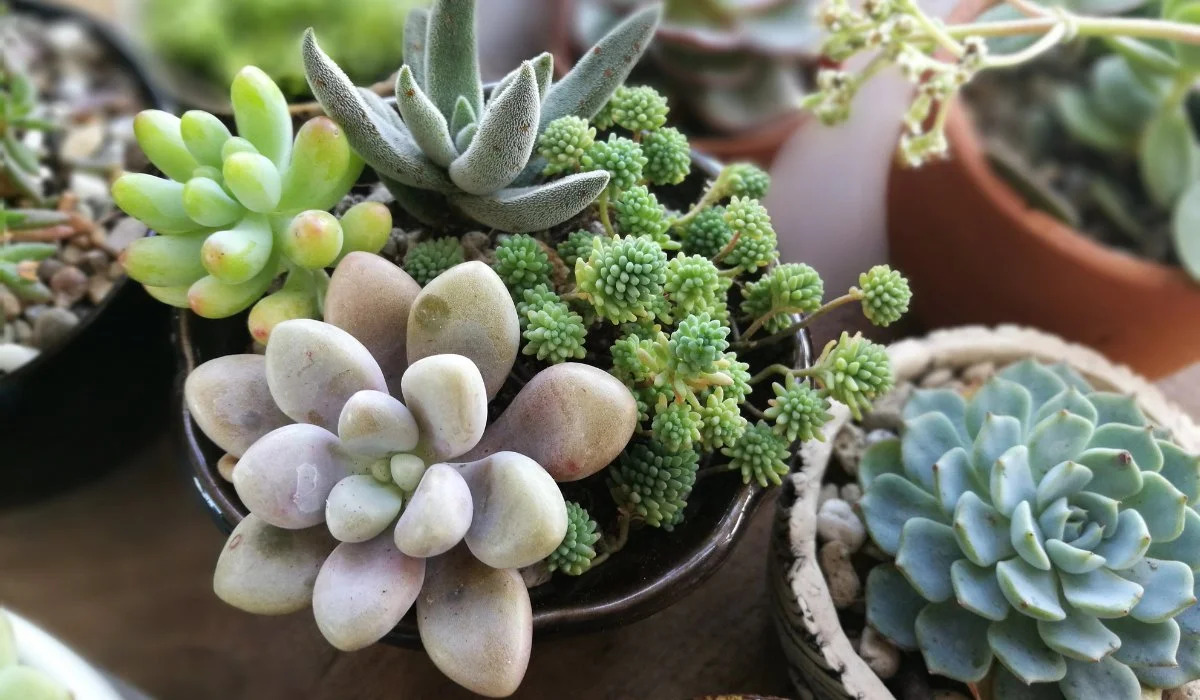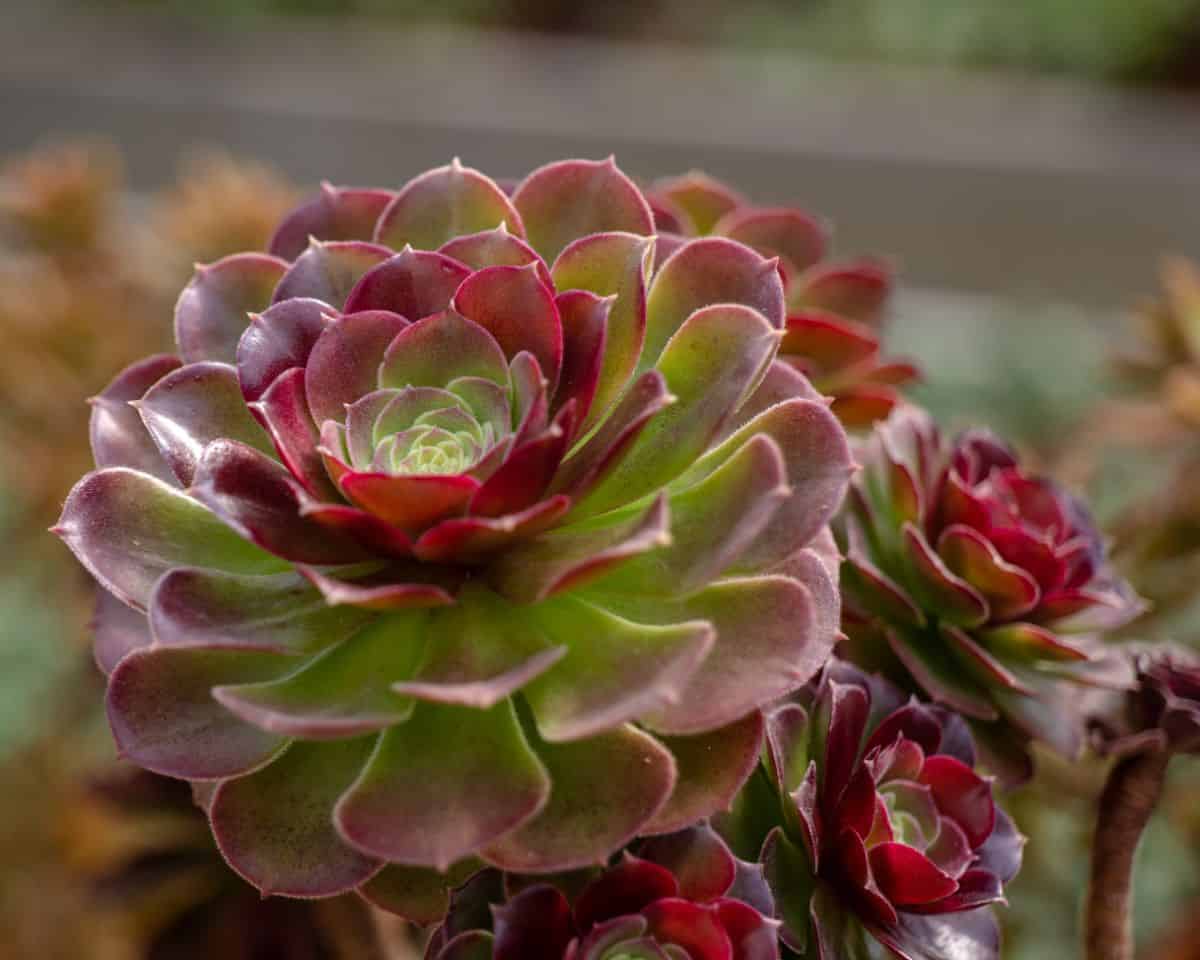Home>Types of Gardening>Ornamental Gardening>What To Do With Overgrown Succulents
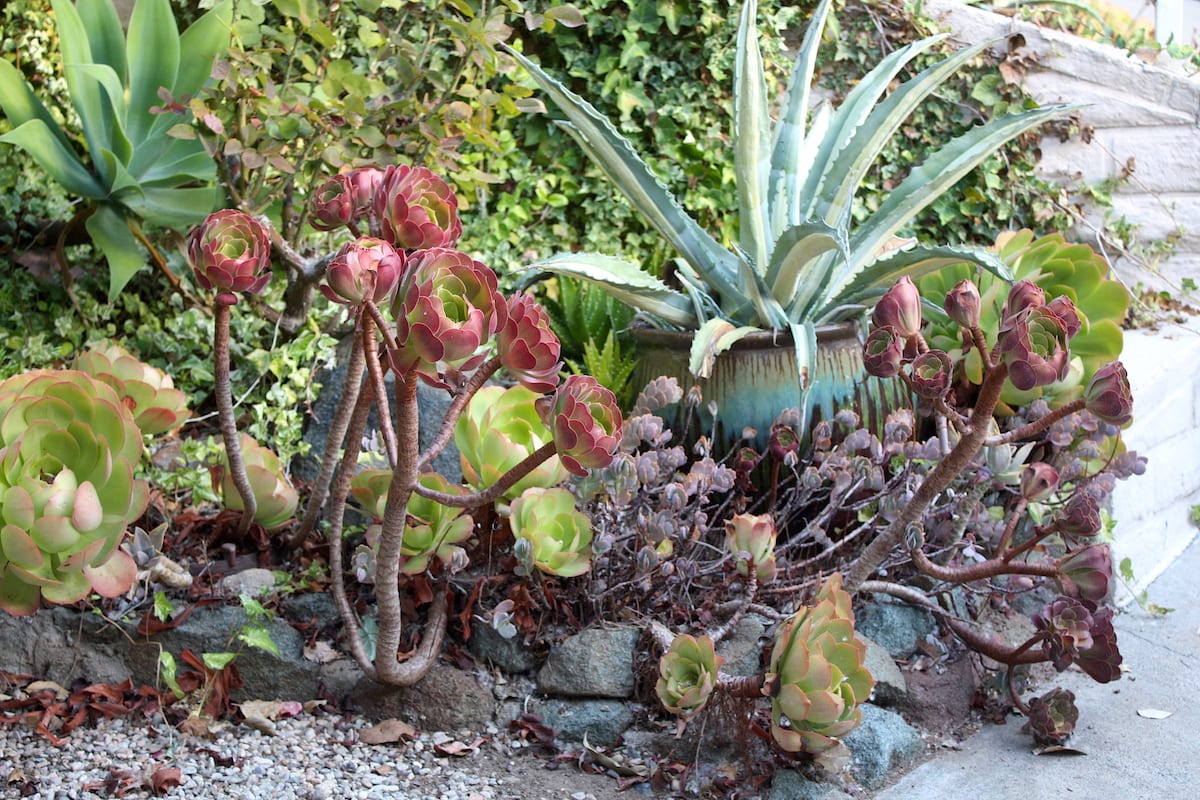

Ornamental Gardening
What To Do With Overgrown Succulents
Modified: January 22, 2024
Discover valuable tips for managing overgrown succulents in your ornamental gardening. Learn how to trim, propagate, and maintain these beautiful plants for a thriving garden.
(Many of the links in this article redirect to a specific reviewed product. Your purchase of these products through affiliate links helps to generate commission for Chicagolandgardening.com, at no extra cost. Learn more)
Table of Contents
Introduction
Welcome to the world of ornamental gardening! If you’re a gardening enthusiast, you’re likely familiar with the joy of nurturing and watching plants thrive. One type of plant that has gained immense popularity in recent years is succulents. These hardy and low-maintenance plants can be found in a variety of shapes, sizes, and colors, making them a favorite among gardeners.
However, like any plant, succulents can become overgrown if not properly cared for. Overgrown succulents not only lose their aesthetic appeal but can also suffer from poor health and limited growth potential. That’s why it’s essential to learn how to manage and maintain overgrown succulents to keep them healthy and visually pleasing.
In this article, we will explore the reasons behind succulent overgrowth, how to identify the signs of overgrowth, and various techniques to prune and propagate your succulents. We’ll also delve into container transplantation and highlight important considerations when it comes to soil and fertilizer. By the end of this article, you’ll have a comprehensive understanding of how to deal with overgrown succulents and help them thrive in your garden.
So, let’s get started and discover the fascinating world of succulent care and maintenance!
Reasons for Overgrown Succulents
There are several factors that can contribute to the overgrowth of succulents. Understanding these reasons can help you better manage and prevent overgrowth. Here are some common causes:
- Overwatering: Succulents are known for their ability to store water in their leaves and stems. However, they are not adapted to excessive moisture. Overwatering can lead to root rot and the rapid growth of succulents, causing them to become leggy and stretched out.
- Lack of sunlight: Succulents thrive in bright sunlight. Insufficient light can result in elongated stems and sparse foliage as the plants stretch to reach for more light. This can lead to an unattractive and unbalanced appearance.
- Inadequate spacing: Placing succulents too close together can limit air circulation and encourage overcrowding. This can cause competition for sunlight and resources, resulting in stretching and weak growth as the plants try to survive in limited space.
- Infrequent pruning: Neglecting to prune your succulents can lead to excessive growth. Regular pruning helps maintain a compact and attractive shape, encourages bushier growth, and prevents succulents from becoming leggy and unbalanced.
These are just a few of the primary factors that contribute to succulent overgrowth. By understanding these reasons, you can adjust your care routine and create a more favorable environment for your succulents, preventing excessive growth and maintaining their beauty.
Signs of Overgrowth
Recognizing the signs of overgrown succulents is essential for addressing the issue in a timely manner. Here are some indicators that your succulents may be experiencing overgrowth:
- Leggy stems: Overgrown succulents often develop elongated and stretched out stems. This occurs when the plant is reaching for more light due to inadequate sunlight exposure.
- Sparse foliage: As succulents grow excessively, the foliage may become sparse and thin. This is especially noticeable towards the bottom of the plant, where new growth is lacking.
- Unbalanced appearance: Overgrown succulents may appear top-heavy or unevenly shaped. This can occur when the plant focuses its growth on certain areas, causing an unattractive and unbalanced overall appearance.
- Roots emerging from the container: When your succulent has outgrown its current container, you may notice roots starting to emerge from the drainage holes or growing above the soil surface. This is a clear sign of overgrowth and the need for a larger container.
Paying attention to these signs will help you identify and address overgrowth before it becomes a more significant issue. Regularly inspect your succulents and take action as soon as you notice any of these symptoms. This will ensure the health and aesthetic appeal of your plants while promoting balanced growth.
Pruning Techniques
Pruning is an essential practice for managing overgrown succulents and maintaining their shape and health. Here are some pruning techniques to help you keep your succulents in optimal condition:
- Pinching: Pinching the tips of succulent stems with your fingers can encourage branching and bushier growth. This helps create a more compact and aesthetically pleasing plant.
- Trimming: Use clean and sharp gardening shears or scissors to trim away leggy or diseased stems. Cut just above a leaf node to encourage new growth in that area.
- Beheading: This technique involves removing the top portion of the succulent, including the stem and leaves. Allow the beheaded portion to dry and callus before planting it in well-draining soil. The remaining stem will produce new growth and offshoots.
- Leaf removal: In some cases, succulents may become overcrowded with leaves, causing the plant to appear dense and imbalanced. Carefully remove a few leaves at a time, starting from the bottom, to create better airflow and a more appealing shape.
Remember, when pruning, it is essential to use clean and sterile tools to prevent the spread of disease. Additionally, water your succulents a day or two before pruning to prevent dehydration during the process.
By employing these pruning techniques, you can manage the overgrowth of your succulents, promote healthier growth, and maintain their overall appearance and vitality.
Propagation Methods
Propagation is a fantastic way to not only manage overgrown succulents but also expand your collection or share plants with others. Here are some popular propagation methods for succulents:
- Leaf cuttings: Gently remove a healthy leaf from the succulent, making sure to include the entire leaf blade. Allow the leaf to dry for a few days until a callus forms, then place it on well-draining soil. Over time, a new plantlet will grow from the base of the leaf.
- Stem cuttings: Cut a healthy stem just above a leaf node and allow it to dry for a few days. Plant the cuttings in well-draining soil, ensuring that at least one leaf node is buried. With proper care, the cutting will develop roots and grow into a new succulent.
- Offsets: Many succulents produce offsets, also known as “pups,” which are smaller plants that emerge from the base of the main plant. Gently separate the offset from the mother plant and plant it in its own pot or an appropriate location in the garden.
- Division: Some succulents, such as aloe vera, can be divided into multiple plants. Carefully remove the plant from its container and separate the clumps into smaller sections, ensuring that each section has a healthy root system. Replant the divisions in separate pots or areas.
Propagation allows you to rejuvenate overgrown succulents and create new plants, all while preserving the unique characteristics of the parent plant. It’s a rewarding process that adds to the beauty and diversity of your succulent garden.
Remember to provide the right conditions, such as well-draining soil, adequate sunlight, and appropriate watering, to ensure the success of your propagations. With a little patience and care, you’ll soon have a thriving collection of succulents!
Container Transplantation
As succulents grow, they may outgrow their current containers, resulting in overcrowded root systems and limited space for proper growth. Transplanting your succulents into larger containers is crucial for their health and development. Here are some steps to follow when transplanting your succulents:
- Select the right container: Choose a container that is slightly larger than the current one, allowing room for the succulent to grow. Additionally, ensure that the new container has drainage holes to prevent waterlogging.
- Prepare the soil: Use a well-draining soil mix specifically designed for succulents. You can also create your own mix by combining regular potting soil with perlite or sand to improve drainage.
- Remove the succulent: Carefully remove the succulent from its current container by gently loosening the roots and easing it out. Be cautious not to damage the delicate roots while doing this.
- Clean and inspect the roots: Take a closer look at the roots and remove any dead or rotten portions. If the root ball is tightly packed, you can gently loosen it with your fingers to encourage new root growth.
- Plant in the new container: Place a layer of soil at the bottom of the new container and position the succulent in the center. Add more soil around the roots, ensuring that the plant is stable and upright. Lightly press the soil down to secure the succulent in place.
- Water and care: After transplanting, water the succulent lightly to help the roots settle in the new soil. Avoid excessive watering during this period to prevent root rot. Place the container in a location with adequate sunlight to promote healthy growth.
Transplanting your succulents into larger containers provides them with the space they need to grow and expands their root system. It allows for better nutrient uptake and reduces the risk of root-bound plants. Remember to monitor the moisture levels and adjust your watering routine accordingly to support optimal growth and prevent water-related issues.
Soil and Fertilizer Considerations
The type of soil and the application of fertilizer play a crucial role in the growth and overall health of your succulents. Proper consideration of these factors is essential for preventing overgrowth and ensuring optimal plant development. Here are some important soil and fertilizer considerations for your succulents:
Well-draining soil: Succulents prefer soil that allows water to pass through quickly, preventing excess moisture. Use a well-draining soil mix specifically formulated for succulents or create your own by adding perlite or coarse sand to regular potting soil. This helps prevent waterlogging, which can lead to overgrowth and root rot.
Avoid heavy and compact soils: Succulents do not thrive in heavy or compact soils that retain moisture for extended periods. These types of soils can cause the roots to suffocate and lead to overgrowth. Ensure that the soil you choose is light and airy, promoting proper drainage and root development.
Limit the use of fertilizer: Succulents have low nutrient requirements and can be sensitive to over-fertilization. Excessive fertilization can result in rapid growth and weak, leggy plants. Use a balanced and diluted liquid fertilizer specifically formulated for succulents. Apply it sparingly during the active growing season, usually in the spring and summer months.
Follow the manufacturer’s instructions: When using fertilizers, always follow the instructions provided by the manufacturer. Over-fertilizing can lead to chemical burns and damage your succulents. It’s better to under-fertilize than to risk harming your plants. Regularly monitor the condition of your succulents and adjust the fertilizer application as needed.
Consider organic alternatives: If you prefer organic options, there are natural fertilizers available that can provide the necessary nutrients for your succulents. Compost, worm castings, and diluted organic seaweed fertilizer are some examples of organic alternatives that can promote healthy growth without the risk of chemical build-up or harm to the environment.
By selecting the right soil mix and using fertilizer in moderation, you can create an optimal growing environment for your succulents. Remember to monitor the moisture levels, adjust your watering routine accordingly, and provide adequate sunlight to support their growth and prevent overgrowth.
Common Mistakes to Avoid
Caring for succulents requires attention to detail and avoiding certain common mistakes that can hinder their growth and lead to overgrowth. Here are some mistakes to avoid when it comes to succulent care:
- Overwatering: One of the biggest mistakes with succulent care is overwatering. Succulents are drought-tolerant plants and are adapted to storing water in their leaves and stems. Watering them too frequently can lead to root rot and overgrowth. Only water your succulents when the soil is completely dry, and adjust the watering frequency based on the season and humidity levels.
- Insufficient sunlight: Another mistake is not providing enough sunlight to your succulents. Succulents require bright sunlight to develop their vibrant colors and maintain a compact growth habit. Place them in a location with at least six hours of direct sunlight per day. If you notice leggy growth or pale foliage, it’s a sign that they are not receiving enough light.
- Using the wrong soil: Using heavy or moisture-retentive soil is a common mistake that can lead to overgrowth and root rot. Succulents need well-draining soil that replicates their natural habitat. Avoid using regular potting soil that retains moisture and opt for a well-draining succulent-specific mix or create your own by adding perlite or sand to improve drainage.
- Skipping regular pruning: Neglecting to prune your succulents can result in leggy and unattractive growth. Regular pruning helps maintain a compact shape, encourages branching, and prevents overgrowth. Trim back elongated stems and remove dead or diseased foliage to promote healthy growth and maintain the plant’s overall appearance.
By avoiding these common mistakes and adopting mindful succulent care practices, you can ensure the health, beauty, and longevity of your succulent collection. Remember to observe and understand the specific needs of your succulents, make adjustments as necessary, and enjoy the rewards of a well-maintained garden.
Conclusion
Managing overgrown succulents doesn’t have to be a daunting task. By understanding the reasons behind overgrowth, recognizing the signs, and implementing proper care techniques, you can keep your succulents healthy and visually appealing.
Remember to provide your succulents with the right conditions, including well-draining soil, adequate sunlight, and appropriate watering. Regular pruning and propagation methods can help maintain their shape and prevent overgrowth. Container transplantation allows for healthier root development, while proper soil and fertilizer considerations ensure optimal plant growth without causing excessive growth.
Avoid common mistakes such as overwatering, inadequate sunlight, using the wrong soil, and neglecting regular pruning. By avoiding these pitfalls and practicing mindful care, you can create an environment where your succulents thrive.
So go ahead and dive deeper into the world of ornamental gardening with your succulents. Enjoy the process of caring for these unique and fascinating plants, and take pride in the beauty they bring to your garden or indoor space.
With the knowledge and techniques provided in this article, you are well-equipped to tackle any issues of overgrown succulents and ensure their long-term vitality. Happy gardening!
